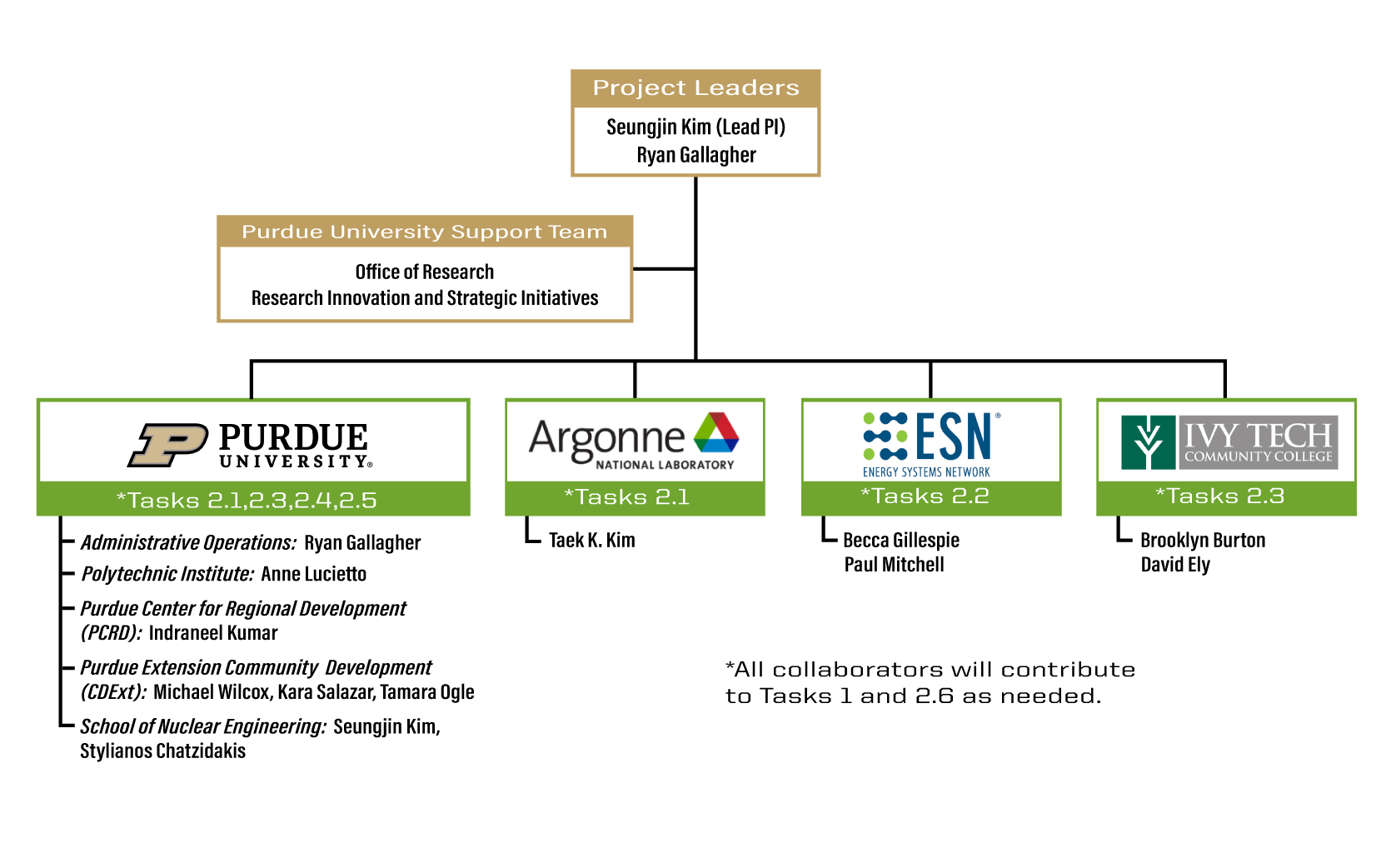Purdue University chosen by Indiana Office of Energy Development for Indiana Focused SMR Study

In collaboration with the IOED, the extensive study’s main objectives are to analyze SMR technology’s current status, the state and local economic impact, workforce development and employment, safety and environmental impact, the responsible handling of nuclear waste and site considerations, and community engagement needs and best practices.
This partnership aims to further IOED’s mission of providing comprehensive energy planning and policy development for Indiana that is affordable, stable, reliable, and inclusive of a diverse and balanced generation mix.
Seungjin Kim, the Capt. James F. McCarthy, Jr. and Cheryl E. McCarthy Head of the School of Nuclear Engineering, and Ryan Gallagher, Associate Vice President of Purdue’s Facilities Operations and Environmental Health and Safety, are leading the study with IOED in collaboration with experts from various institutions, including Argonne National Laboratory and Ivy Tech Community College.
Kim mentioned that this is the first state-sponsored study of its kind that they are aware of, which has attracted federal attention to their ongoing work and future findings.
“It is not only logical, but also in a way, in my opinion, is essential to consider nuclear for the state if we are serious about moving forward to a carbon-free environment,” said Kim.
Purdue’s history of research and development of new energy that benefits Indiana is a longstanding commitment.
“Purdue began seriously researching the practical application of small modular nuclear technology with Duke Energy in 2022 when we kicked off our joint feasibility study,” Gallagher explained. “Since then, we have continued to expand our knowledge on topics including technology development, approval and implementation timelines, siting considerations, and other factors that position us well to help the state evaluate the potential benefits SMRs could bring to Indiana.”
Currently, coal supplies the largest share of Indiana’s total in-state utility-scale electricity generation. SMRs are capable of generating up to 300 megawatts of power per unit, approximately one-third of the capacity of traditional reactors.
According to Kim, SMRs will be manufactured in factories, potentially making them more affordable and versatile, including the capability to generate hydrogen. SMRs feature passive safety systems and advanced nuclear fuel, which reduce safety risks and the chance of fuel melt. They can provide a stable energy baseload and integrate other renewable sources like wind and solar.
The study began in March 2024 and is predicted to conclude in October 2024.
Learn more about the Indiana Focused SMR Study
